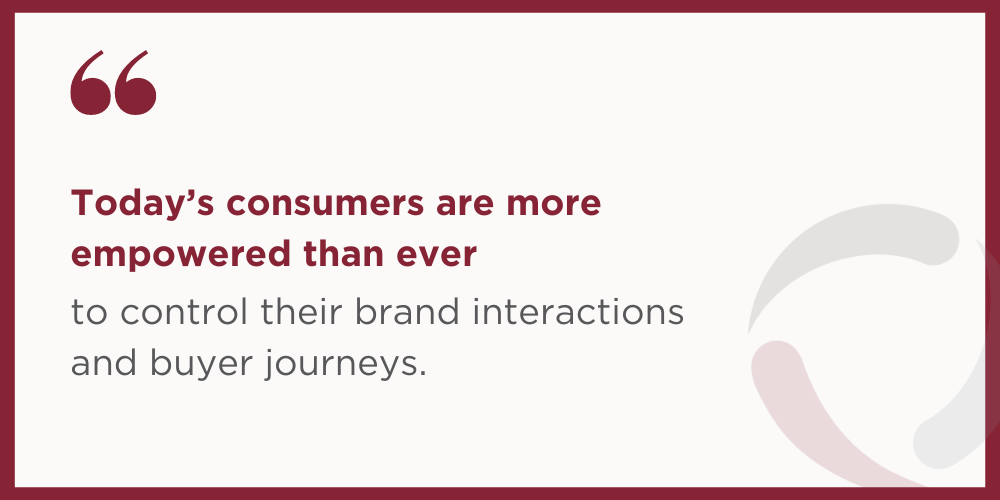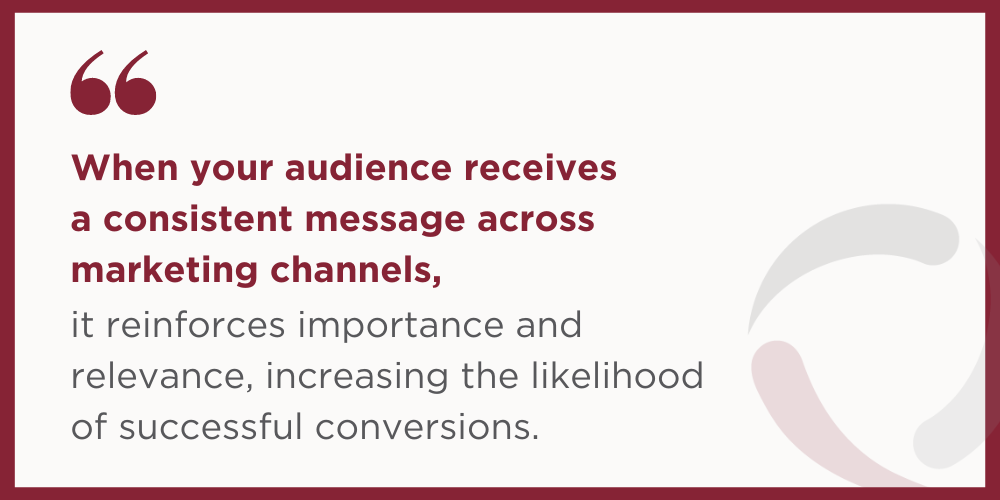Four Reasons Why an Integrated Direct Response Campaign Can Fail

Perhaps you invested considerable time, effort, and resources into creating an integrated direct response campaign. As the campaign launches, you notice it’s not delivering the results you expected. Your multichannel marketing strategy is collapsing before your eyes like a poorly built tower of blocks.
Don’t let this scenario become a reality for you. Here are four reasons why an integrated direct response campaign can fail, and solutions to avoid these pitfalls.
1. Only Focusing on Digital Marketing
Today’s consumers are more empowered than ever to control their brand interactions and buyer journeys. Our research shows that 42% of consumers engage with mail each week, while more than 30% do not engage with paid online search, text messages, or influencer ads at all. Therefore, limiting yourself to digital-only strategies and targeting options can restrict you from a significant portion of your best audience.
Your focus on digital channels may be due to familiarity or comfort, cost-effectiveness, accessibility, or because you’ve found it to be the most effective approach. Yet, as with any solo approach, performance will eventually start to plateau. Depending solely on digital strategies will result in missed opportunities and KPIs for your business. Your efforts to expand reach with broader search terms, looser look-alike models, and additional digital channels may actually be moving you further and further away from your target customer.
Instead, we recommend diversifying your marketing strategy with offline channels like direct mail. This provides a unique opportunity to capture attention that digital advertisements can’t replicate. Both direct mail and digital marketing have unique strengths and can complement one another to amplify your direct marketing program’s overall performance. A test-and-learn approach is the best way to find the optimal channel mix for your brand and growth goals.
Tip: If direct mail isn’t in your budget right now, consider digital-only alternatives that use offline data to test the audience. You can opt for ProspeQtor, an affordable and dynamic multichannel prospecting strategy.

2. Not Leveraging Offline Data Sources
Accurate consumer data is the lifeblood of direct response marketing. Often limited to browsing history and search intent, online prospecting data and probabilistic audiences make it challenging to identify individual consumer data points. The last thing you want is a lack of audience insights and failing to reach your brand’s best prospects.
To overcome this hurdle, one strategy is to use direct mail lookalike audiences to integrate your online and offline targeting strategies. Methodologies like SeQuel Surround help marketers activate rich consumer data sets in digital environments. Your direct mail audience is then reachable across digital channels such as display, native, web video, connected radio, and CTV|OTT. As your campaign progresses and new data sources are tested, you can adjust the marketing mix to target more effectively, scale your efforts, and optimize performance.
Obtain a more detailed customer view by working with a trusted partner to append or enrich existing data. An experienced direct response agency will be your go-to resource for delivering more targeted, personalized messages to the right audiences.
Tip: Look for partners with high data security standards, certifications, and processing practices. AICPA, SOC2, and HIPAA Seal certifications show an agency’s dedication to keeping data private and secure.
3. Inefficient Testing Methodologies
Inefficient or non-existent testing often leads to the assumption that certain variables are the best-performing ones, resulting in repeated failures and a lower ROI. That’s why you should invest in statistically significant testing efforts that can bring these factors to light and avoid assumptions.
83% of marketers reported that they are likely to test new digital integration strategies in the future. To stay ahead, test as broadly as possible to identify what is not working. This is especially critical when launching a new channel. By testing factors such as prospect models, creative elements, and offers, you can gather valuable insights that inform data-driven decisions and optimize the effectiveness and performance of your marketing efforts.
To measure the overall success of your integrated direct response campaign, set up holdout panels for different channels and measure conversions, costs, and revenue. You can also implement multi-touch attribution to understand each channel’s contribution to multichannel campaigns.
Tip: If you’re looking for an optimal testing strategy, consider SeQuel’s FaQtor Test. It’s a hybrid approach that gives you success rates comparable to a full-scale multivariate test but at a lower investment level, like that of an A/B test.
4. Inconsistency Across Channels
When your messaging, branding, and offers are inconsistent across different channels, it creates confusion among your target audience and ultimately diminishes your brand’s trust and the effectiveness of your integrated direct response campaign.
33% of consumers have googled a product or service advertised in direct mail. When your audience receives a consistent message across marketing channels, it reinforces importance and relevance, increasing the likelihood of successful conversions. This connection is key to cultivating brand loyalty, increasing customer engagement, and establishing a strong and lasting relationship with your audience.
There is also a fine line between staying top-of-mind and annoying consumers. Frequency plays a significant role in the success of your campaign and in providing an enjoyable customer experience. Frequent timing may feel intrusive or spammy, while infrequent timing can be easily forgotten or overlooked. The best way to optimize your frequency is to segment your audience properly and test when and where your digital and physical touchpoints produce the highest conversions.
Tip: More than 70% of consumers agree it is more important than ever to purchase from brands that reflect their values. Aligning your brand’s story and your target audience’s wants and needs is critical to forming brand affinity in today’s competitive marketplace.

————
Achieving success in an integrated direct response campaign requires an intentional, well-planned, and flexible strategy.
Our team of skilled strategists can help you achieve scalable success. Contact us today to learn how to optimize your ROI and establish long-term customer satisfaction and loyalty.
Enjoy this post? Dive into some related content:
- The Digital Marketer’s Guide to Integrated Direct Mail
- Multichannel Marketing Magic: Q&A with Wiland
- Integrated Direct Marketing Mistakes
- Direct Mail or Digital Marketing: Finding the Perfect Balance in Modern Marketing

